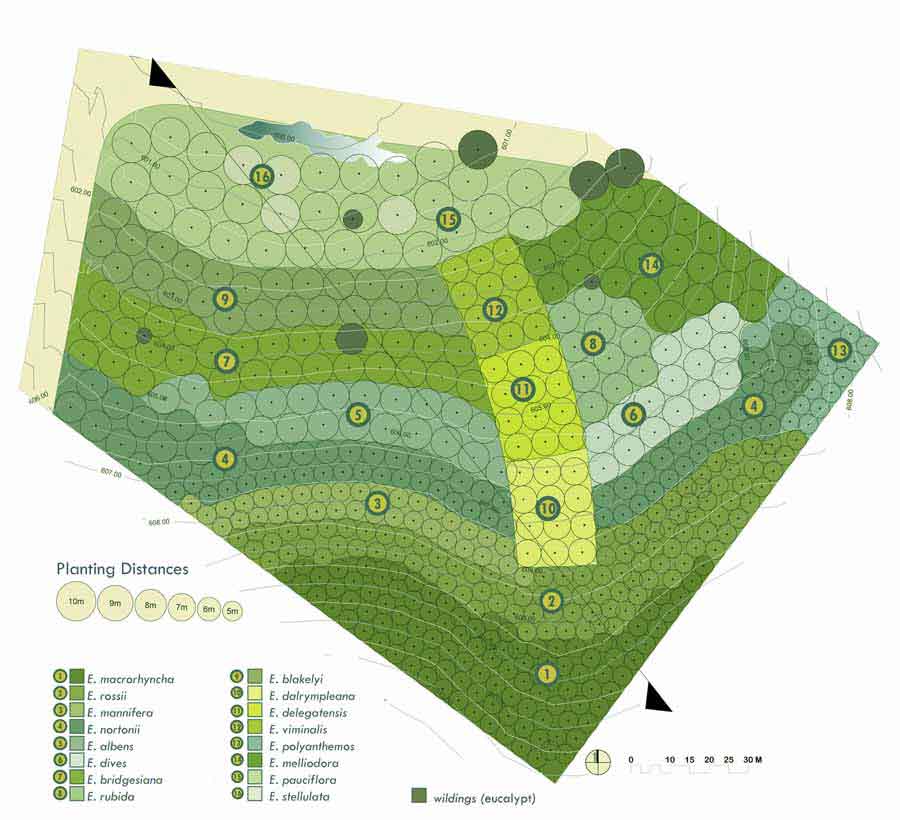Forest 20 differs from other forests at the National Arboretum Canberra. 16 species of Eucalyptus typical of the forests and woodlands of the Southern Tablelands region of New South Wales (including the Australian Capital Territory) have been planted.
The trees on Forest 20 are arranged in bands that represent an approximation to their landscape position in the Southern Tablelands. Dry forest species are grouped on the higher parts, open woodland species are in the middle and species found in areas that receive cold air drainage are located in the lowest area. Species found in wetter, montane locations are planted in the central area, which receives the most run-off from other parts of the local catchment.
The 16 species planted are:
Eucalyptus albens — White Box
Eucalyptus blakelyi — Blakely’s Red Gum
Eucalyptus bridgesiana — Apple Box
Eucalyptus dalrympleana — Mountain Gum
Eucalyptus dives — Broad-leaved Peppermint
Eucalyptus macrorhyncha — Red Stringybark
Eucalyptus mannifera — Brittle Gum
Eucalyptus melliodora — Yellow Box
Eucalyptus nortonii — Large-flowered Bundy
Eucalyptus pauciflora — Snow Gum/White Sally
Eucalyptus polyanthemos — Red Box
Eucalyptus radiata subsp. robertsonii — Narrow-leaved Peppermint
Eucalyptus rossii — Scribbly Gum
Eucalyptus rubida — Candlebark
Eucalyptus stellulata — Black Sally
Eucalyptus viminalis — Ribbon Gum/Manna Gum

